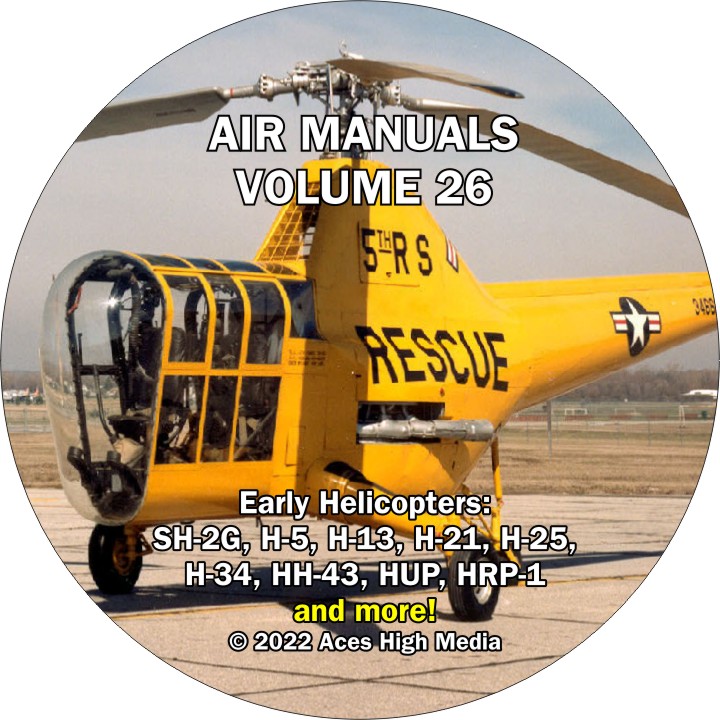Aces High Air Manuals
Volume 26: Early Helicopters
Kaman UH-2C Seasprite

|
Kaman UH-2C (SH-2) Seasprite Flight Manual
282 pages
The Kaman SH-2 Seasprite is a ship-based helicopter originally developed in the late 1950s as a fast utility helicopter for the United States Navy. In the 1970s, anti-submarine, anti-surface threat capabilities were added to the design, including over-the-horizon targeting, resulting in modifying most existing UH-2 models to the SH-2 Seasprite.
|

|
Kaman SH-2G Super Seasprite Flight Manual
819 pages
The Kaman SH-2G Super Seasprite is an American ship-based helicopter with anti-submarine, anti-surface threat capability, including over-the-horizon targeting. This aircraft extends and increases shipboard sensor and weapon capabilities against several types of enemy threats, including submarines of all types, surface ships, and patrol craft that may be armed with anti-ship missiles. It was originally developed for the United States Navy in 1980s as a reengined version of the older Kaman SH-2 Seasprite.
The SH-2G's primary missions include anti-submarine and anti-surface warfare, anti-ship missile defense, and anti-ship surveillance and targeting. Secondary missions may include medical evacuation, search and rescue, personnel and cargo transfer, as well as small boat interdiction, amphibious assault air support, gun fire spotting, mine detection and battle damage assessment. |
Sikorsky H-5

|
Sikorsky H-5 Flight Handbook, Flight Operating Instructions
28 pages
The Sikorsky H-5, (initially designated R-5 and also known as S-48, S-51 and by company designation VS-327) was a helicopter built by Sikorsky Aircraft Corporation.
It was used by the United States Air Force, and its predecessor, the United States Army Air Forces, as well as the United States Navy and United States Coast Guard (with the designations HO2S and HO3S). It was also used by the United States Post Office Department. In December 1946, an agreement was signed between the British company Westland Aircraft and Sikorsky to produce a British version of the H-5, to be manufactured under license in Britain as the Westland-Sikorsky WS-51 Dragonfly. By the time production ceased in 1951, more than 300 examples of all types of the H-5 had been built. |
Bell H-13 (Model 47) Sioux
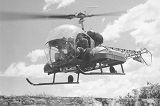
|
Bell Model 47G Sioux Flight Manual
37 pages
The Bell H-13 Sioux was a two bladed-bladed, single engine, light helicopter built by Bell Helicopter.
In 1947, the United States Army Air Forces (later the United States Air Force) ordered the improved Bell Model 47A. Most were designated YR-13 and three winterized versions were designated YR-13A. The United States Army first ordered Bell 47s in 1948 under the designation H-13. These would later receive the name Sioux. Pictured here is an H-13 with medevac panniers. |
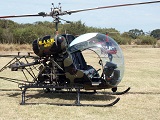
|
Bell Model 47G Sioux Illustrated Parts Breakdown
308 pages
The H-13 and its military variants were often equipped with medical evacuation panniers, one to each skid, with an acrylic glass shield to protect the patient from wind. In this configuration, the Sioux appeared, and played key roles, in both the M*A*S*H film and the television series. Pictured here is a Bell 47G in the M*A*S*H paint scheme.
Photo credit: Nachoman-au (CC-BY 3.0) |
Piasecki H-21 Shawnee
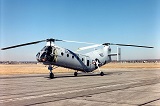
|
Piasecki H-21B, H-21C Shawnee Flight Handbook
48 pages
The Piasecki H-21 Workhorse/Shawnee is an American helicopter, the fourth of a line of tandem rotor helicopters designed and built by Piasecki Helicopter (later Boeing Vertol). Commonly called the "flying banana", it was a multi-mission helicopter, utilizing wheels, skis, or floats.
The H-21 was originally developed by Piasecki as an Arctic rescue helicopter. The H-21 had winterization features permitting operation at temperatures as low as −65 °F (−54 °C), and could be routinely maintained in severe cold weather environments. |
Hiller OH-23 Raven
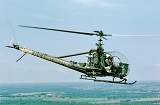
|
Hiller OH-23 (UH-12) Raven Operator's Manual (1965)
168 pages
The Hiller OH-23 Raven was a three-place, light observation helicopter based on the Hiller Model 360. The Model 360 was designated by the company as the UH-12 ("UH" for United Helicopters), which was first flown in 1948. The OH-23 trainer was jokingly nicknamed the "Hiller Killer" by US Army Aviation student pilots who had to fly it.
This manual includes the student reference card containing the startup, pre-takeoff, and shutdown checklists. |
Piasecki H-25 Army Mule / HUP Retriever

|
Piasecki H-25A Army Mule and Navy Models HUP-1, HUP-2 and HUP-3 Retriever Flight Handbook
182 pages
The Piasecki H-25 Army Mule/HUP Retriever was a compact single radial engine, twin overlapping tandem rotor utility helicopter developed by the Piasecki Helicopter Corporation of Morton, Pennsylvania during the late 1940s and produced during the early 1950s.
Versions of the HUP built for the U.S. Army were designated H-25 Army Mule. Photo credit: RuthAS (CC-BY-SA 3.0) |
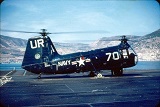
|
Piasecki HUP-1, HUP-2 Retriever Pilot's Handbook
78 pages
The tandem overlapping rotor configuration was a development by Piasecki and was used in future helicopter designs by the company and successors including the H-21, HRB-1/CH-46, and CH-47. Seventy were delivered from 1953, but they were unsuitable for front-line use, with 50 transferred to the navy from 1955, and the remaining helicopters used for training, being withdrawn from army service by 1958. |
Sikorsky H-34 (Navy HSS-1)
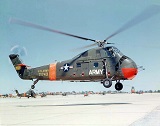
|
Sikorsky H-34 (Navy Model HSS-1, HUS-1, and HUS-1A) Flight Handbook
104 pages
The Sikorsky H-34 (company designation S-58) is a piston-engined military helicopter originally designed by American aircraft manufacturer Sikorsky as an anti-submarine warfare (ASW) aircraft for the United States Navy. It has seen extended use when adapted to turbine power by the British licensee as the Westland Wessex and Sikorsky as the later S-58T.
H-34s served, mostly as medium transports, on every continent with the armed forces of twenty-five countries. It saw combat in Algeria, the Dominican Republic, Nicaragua, and throughout Southeast Asia; other uses included saving flood victims, recovering astronauts, fighting fires, and carrying presidents. It was one of the last piston-powered helicopter designs before its replacement by turbine-powered types such as the UH-1 Huey and CH-46 Sea Knight. A total of 2,108 H-34s were manufactured between 1953 and 1970. |
Kaman HH-43 Huskie
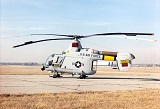
|
Kaman HH-43B Huskie Flight Manual
197 pages
The Kaman HH-43 Huskie was a helicopter with intermeshing rotors used by the United States Air Force, the United States Navy and the United States Marine Corps from the 1950s until the 1970s. It was primarily used for aircraft firefighting and rescue in the close vicinity of air bases, but was later used as a short range overland search and rescue aircraft during the Vietnam War. 200 units of this model were built.
|

|
Kaman OH-43D/UH-43C (Navy Models HOK-1/HUK-1) Huskie Flight Manual
132 pages
The HOK-1 and HUK-1 are versions for the United States Marine Corps and the United States Navy, respectively. The HOK-1 later became the OH-43D. The HUK-1 later became the UH-43C. 81 HOK-1s and 24 HUK-1s were built. This manual covers both.
|

|
Kaman TH-43E (Navy Model HTK-1) Huskie Pilot's Handbook
51 pages
The HTK-1 is a three-seat production model for the United States Navy. This model later became the TH-43E. 29 units of this model were built.
|
Sikorsky S-61
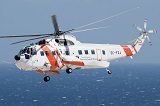
|
Sikorsky S-61L Flight Manual
300 pages
The Sikorsky S-61L and S-61N are civil variants of the successful SH-3 Sea King helicopter. They are two of the most widely used airliner and oil rig support helicopters built.
Photo credit: Peng Chen (CC-BY-SA 2.0) |
Piasecki HRP-1 Rescuer

|
Piasecki HRP-1 Rescuer Pilot's Handbook
48 pages
The Piasecki HRP Rescuer (also called Harp) was a United States tandem-rotor transport or rescue helicopter designed by Frank Piasecki and built by Piasecki Helicopter. The Piasecki PV-3 was adopted as the HRP-1 Rescuer by the United States Navy, United States Marine Corps, and United States Coast Guard. An improved PV-17 variant was later produced as the HRP-2. As one of the first transport helicopters in military service, the HRP-1 was capable of carrying two crewmen and 8-10 passengers or 2,000 lb. (907 kg) of cargo.
The prototype helicopter (designated PV-3 by Piasecki, though commonly known to test personnel as "The Dogship") first flew at Morton, Pennsylvania in March 1945 following a development contract from the United States Navy in February 1944. The "Dogship" was a novel tandem-rotor helicopter with a fixed tricycle landing gear, powered by a 600 hp (447 kW) Pratt & Whitney R-1340-AN-1 engine. To ensure that the rotors did not hit each other, the rear end of the fuselage curved upwards so the rear rotor was higher than the forward rotor. |
